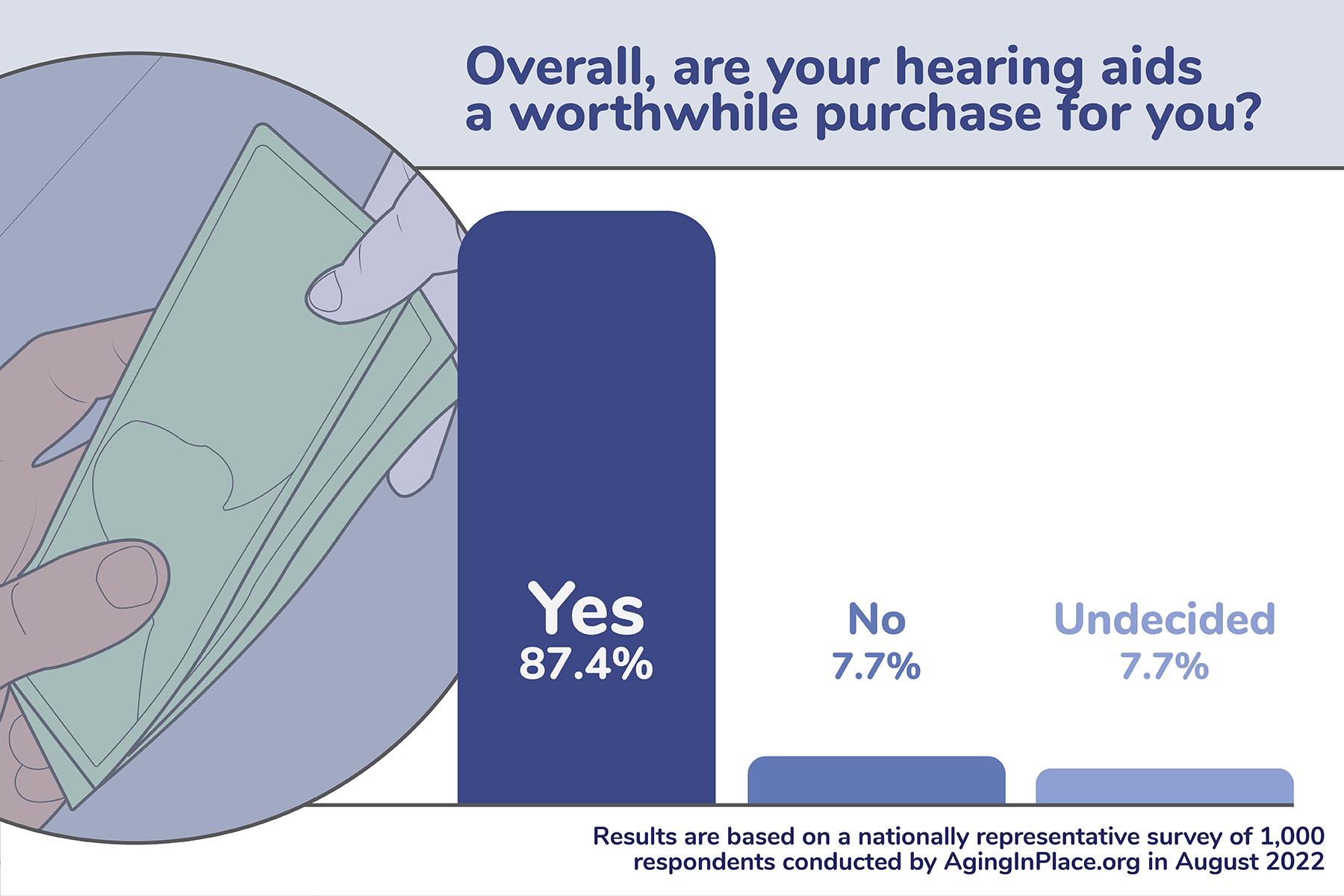87.4% of hearing aid users consider their hearing aids a worthwhile purchase
The most to least popular hearing aid styles are: In the ear (32.9%), Behind the ear (25.9%), Invisible (17.8%), In the canal (12.3%), and Receiver in canal (7.8%)
52.9% of people say the high cost of hearing aids is the biggest reason they’re hesitant to buy them
Only 20.4% of people pay for their hearing aid purchase completely out of pocket
43.5% of hearing aid users’ biggest regret about their hearing loss is that they didn’t avoid activities that damaged their ears
42.5% of people wish they had more consistently checked their hearing when they were younger
AgingInPlace.org surveyed 1,000 hearing aid users. We referenced feedback from a medical reviewer to help determine our survey questions. Survey participants ranged from age 25 and older, with the highest percentage of individuals falling between 35–44 years old. Our respondents were located in almost all 50 states and represented gender and racial diversity.
- Was this Article Helpful ?
- YesNo




